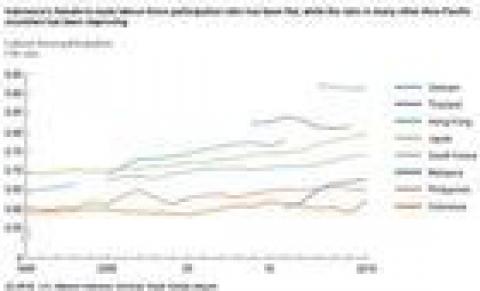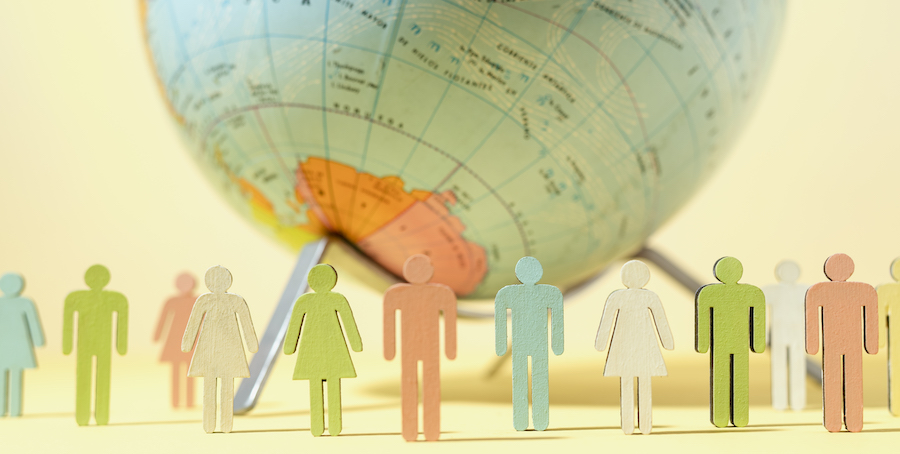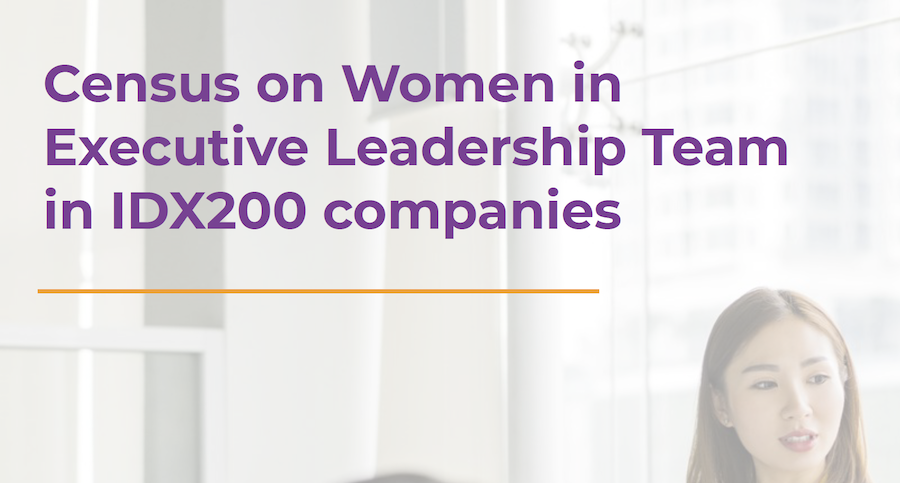
Cross Gender Mentorship for Women Leadership
December 5, 2023
Sexual Violence Afflicts Many Workers in Indonesia
December 13, 2023According to data processed by McKinsey Global Institute, the ratio of female work participation is still low, tends to be flat, compared to men in Indonesia. The participation of the female labor force has hardly moved over the past 20 years, constant at around 51 percent of women, with a static ratio of female to male participation of 0.62. This has long-term implications for women’s economic and social empowerment, and represents missed growth opportunities.
With this data, Indonesia actually has three significant opportunities. The first is increasing the number of women in leadership positions in business. Second is to increase legal protection for women. Third is accelerating progress on labor force participation. MGI has seen, and stated that by focusing on two ways to increase women’s participation, namely: improving infrastructure and using wider digital technology. These two things are very relevant and potentially high-impact in Indonesia.
In a national seminar entitled “Reducing Women’s Poverty Towards a Strong and Equitable Indonesian Economy”, to commemorate 2018 International Women’s Day, the focus is to alleviate wage discrimination, preference for male workers, lack of facilities, and other issues of gender equality (quoted from Magdalene, 03/18). Minister of National Development Planning Agency (Bappenas) Bambang Broedjonegoro said the poverty rate in Indonesia declined to 10.19 percent in 2017 from 10.86 percent in 2016, according to data from the Central Statistics Agency (BPS).
“But we also have to understand that 10.19 percent is still equivalent to 26 million people in Indonesia. Of the 26 million residents, if we pay attention according to gender, then the poverty rate of women is relatively higher in almost all age levels, “Bambang said. He added, the higher poverty of women than men evenly distributed in all provinces.
In fact, according to data the level of participation of women in the field of Education is quite high, some even show higher than men. Unfortunately the level of women’s participation in employment is much lower. Bambang said that female labor force participation was only 51 percent, meaning that of all productive age women, only 51 percent worked. Meanwhile, the male labor force participation rate is 82 percent.
The high level of discrimination, especially the issue of wages for women workers, is one reason why female labor force participation is still low. “The increasingly strong discrimination will reduce the interest of women to be active in the labor market. There must be an equalization effort. Not looking at gender, but looking at qualifications, skills. If everyone who has the same qualifications or skills, the salary received should be the same. There should be no wage discrimination based only on gender, “he said.
In addition, according to data from MGI, legal protection for women in Indonesia is still weak in three ways. First, there are national legislative gaps such as lack of equal inheritance rights for women and lack of protection in the workplace. Second, several local and regional regulations conflict with national standards. Third, many women work in the informal sector (not regulated); 24 million Indonesian women, 54 percent of female workers, work informally, and therefore have no legal protection and often face discrimination. The wage gap between men and women due to discriminatory practices is 36 percent in the informal sector, compared to 20 percent in the formal sector. Finally, there are gaps in the enforcement of legal protection for women. It has been suggested that poor non-discrimination law enforcement, combined with strong provisions on maternity and menstruation leave in Indonesia, has exacerbated discrimination against women, because businesses do not want to bear the costs of these rights and are not afraid if they refuse to do so.
Bambang explained a number of efforts and strategies undertaken by the government to end gender inequalities in access to work and poverty alleviation in Indonesia, including maximizing the application of Equal Employment Opportunities, providing child care in the workplace, and maternity leave according to the needs of workers women. However, he also underlined the importance of increasing the age of marriage, and reducing





